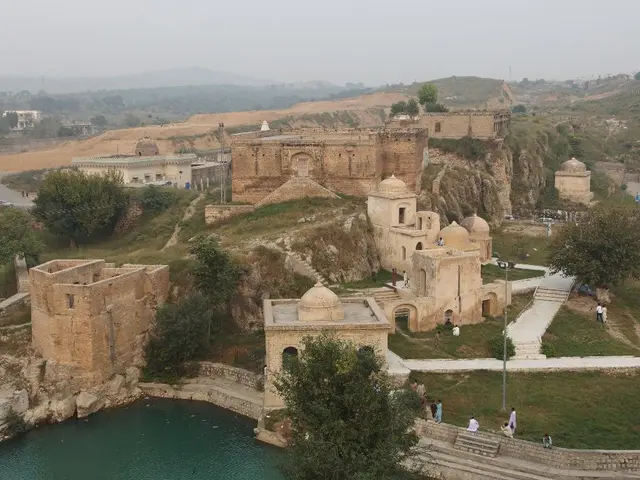Disney's Modern-day Fairytale Castle Granted UNESCO World Heritage Recognition
In a historic move, UNESCO has added the castles of **Neuschwanstein, Herrenchiemsee, Linderhof,** and **Schachen** - once private retreats of the eccentric King Ludwig II of Bavaria - to its World Heritage Sites list. The collective recognition celebrates these architectural wonders for their exceptional beauty, romantic historicism, and deep cultural and natural integration.
**Neuschwanstein**, the most iconic of the four, stands dramatically above the Allgäu region with a fairy-tale silhouette that inspired Disney’s Cinderella Castle. Its interior is adorned with themes from Wagner’s operas, reflecting Ludwig II’s intense fascination with the composer. Highlights include a Byzantine-style royal bedroom, an artificial grotto linking the king’s quarters with his office, and cutting-edge 19th-century technology.
**Linderhof**, the smallest palace, is the only one Ludwig II lived in for an extended period. It boasts Rococo and Baroque flourishes, elaborate gardens, and a grotto with artificial lake and lighting effects, all clear nods to Romanticism and Wagner's operas.
**Herrenchiemsee**, a Bavarian homage to Versailles, is constructed on an island in Lake Chiemsee. It reflects Ludwig’s admiration for the absolutist French monarchy, with grand halls, a Hall of Mirrors, and neoclassical detailing, although left incomplete at the time of his death.
**Schachen** stands apart as a more modest alpine retreat at 1,800 meters above sea level, built in the style of a Swiss chalet. It was Ludwig’s secluded getaway, where he celebrated St. Louis Day and sought spiritual solitude.
Ludwig II’s reign (1864–1886) was marked by a devotion to art and beauty, with these castles serving as private retreats meant to escape the political realities of his monarchy. His building projects were viewed as extravagant and fiscally irresponsible by contemporary ministers, contributing to his eventual deposition and mysterious death. Today, these castles are seen not just as extravagant royal residences, but as emblems of Ludwig’s artistic vision and the Romantic movement in architecture.
The sites were inscribed in July 2025, recognizing their exceptional value as a collective expression of 19th-century romantic historicism, their harmony with the Bavarian landscape, and their representation of a unique historical period when royal patronage drove architectural innovation. UNESCO status brings both prestige and a mandate for enhanced preservation and visitor management, ensuring these sites are protected for future generations.
The Bavarian Castles Administration (BSV) considers the UNESCO listing a recognition for the work done in preservation, but also a "very great responsibility" to manage tourism effectively and control mass tourism. The intricate grotto in Neuschwanstein Castle, for instance, connects the king's quarters to his home office, a feature that requires careful visitor management.
The President of the German UNESCO Commission, Maria Boehmer, stated that the inclusion of the palaces on the World Heritage List is an outstanding honour. Bavaria's governor, Markus Soeder, wrote on X that "A fairytale comes true for our fairytale castles: We are #WorldHeritage!" after the announcement.
In 2024, Neuschwanstein Castle welcomed approximately 1.7 million guests, and models of the original castle adorn theme parks worldwide, including California and Japan. These castles are not just architectural marvels but living monuments to Ludwig II’s unrelenting pursuit of beauty and transcendence - a legacy now secured by their World Heritage status.
- Tourists looking for an eco-friendly reservation can opt for local home-and-garden accommodations near the castles, as the Bavarian Castles Administration is working towards managing tourism effectively to protect these World Heritage Sites.
- The four castles, once private escapes of King Ludwig II, have become tourist attractions, making them an integral part of the local tourism sector, with Neuschwanstein Castle alone welcoming over 1.7 million guests in 2024.
- The UNESCO listing not only celebrates these castles for their exceptional beauty and historical significance but also emphasizes the need for careful preservation and visitor management, considering their delicate interiors and intricate features like the grotto in Neuschwanstein Castle.
- Ludwig II's castles, now World Heritage Sites, serve not only as stunning cases of 19th-century romantic historicism but also as reminders of his lifestyle, marked by an intense devotion to art, beauty, and transcendence, which continue to inspire tourist tours.




